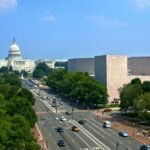
According to a report from the Labor Department on Wednesday, inflation rose at its fastest rate in nearly 40 years in December. The CPI (consumer price index) was noted to have increased by 7%.
Economists had been expecting the gauge to increase 7% on an annual basis and 0.4% from November. If you live in a place that costs a lot to live, the cost of living went up 0.4% for the month, and 4.1% for the year. This is the fastest annual rise since June 1982, when there was a shortage of goods and workers.
Used vehicle prices, which have been a major component of the inflation increase during the Covid pandemic due to supply chain constraints that have limited new vehicle production, rose another 3.5% in December, bringing the increase from a year ago to 37.3 percent. Energy prices, on the other hand, were mostly down for the month. Fuel oil prices dropped 2.4% and gasoline prices dropped 0.5%. However, when taking all components into account, the complex still rose 29% in the last year, with a 49% rise in gasoline prices.
Inflation data is being closely watched by the Federal Reserve.
It’s widely thought that the Fed will raise interest rates this year in an effort to fight rising prices and as the jobs market nears full employment. Though the central bank uses the personal consumption expenditures price index as its main measure of inflation, policymakers look at a lot of different things when they make decisions about how to deal with inflation. With the number of Covid cases rising, the impact on the supply chain and labor shortages could last for a long time, which only leads to higher prices. Strong wage gains for workers have been slashed by rising prices. As a result, the real average hourly wage rose by just 0.1% this month when accounting for inflation. On a year-over-year basis, real earnings were down 2.4%, according to the BLS.
The Fed blames rising inflation on pandemic-specific problems, like a lack of workers that has slowed down supply chains and left stores with empty shelves. Food prices rose 0.5% in December and 6.3% over the last year, which was the biggest rise since October 2008.



